ABOUT
Foshan Bokai Technology Co., Ltd. is an enterprise specializing in the design, production and manufacture of various precision parts. Its business scope includes: hardware product research and development, lighting fixture manufacturing, hardware product manufacturing, electrical replica manufacturing, lighting fixture sales, electrical replica sales, and metal products. Sales etc. The company has structural designers, R&D personnel and CNC technicians who have been engaged for many years, combined into a group of experienced professional technical teams. Through continuous practice, they have summarized a set of mature processing technology and production quality control processes.Equipped with various precision processing equipment and testing instruments. In this way, the design, processing and tooling can be integrated into one. Continuously update equipment and optimize technology to improve quality. We implement strict control machine training for processing and product testing to ensure quality control of parts from material source to machining, production to surface, and provide customers with professional technical personnel. Tracking to meet customer needs.
PRODUCTS
The Ultimate Guide to Manual Coffee Grinders Find Your Perfect Grind Size Achieve Coffee Excellence at Home
Understanding the Types of Manual Grinders
The market boasts a diverse range of manual grinders, each with its strengths and weaknesses. The most common types are burr grinders and blade grinders. Blade grinders, while inexpensive, produce inconsistent particle sizes, leading to uneven extraction and a less desirable cup. They're best avoided for serious coffee brewing.
Burr grinders, on the other hand, are the gold standard for manual grinding. They use two abrasive surfaces (burrs) to crush the beans consistently, resulting in a uniform grind size. These burrs can be made of ceramic or steel, each offering different advantages. Ceramic burrs are generally quieter and less prone to wear, maintaining consistency over time, while steel burrs are often more durable and capable of handling larger volumes of beans.
Beyond the burr material, consider the grinder's design. Hand crank grinders are the most common, offering a simple, reliable method of grinding. However, some grinders feature a motorized crank for a faster grind, though this negates some of the meditative quality of manual grinding. Finally, the size and weight of the grinder will impact your experience. Compact grinders are portable but might have a smaller hopper capacity, while larger grinders offer greater capacity but may be less convenient for travel.
The Importance of Grind Size
Achieving the perfect cup of coffee hinges on selecting the correct grind size. Grind size directly influences extraction time and, consequently, the flavor profile of your brew. Too coarse a grind results in under-extraction—a weak, sour, and acidic cup. Too fine a grind leads to over-extraction—a bitter, harsh, and astringent taste.
Different brewing methods require different grind sizes. Espresso, for example, demands a very fine grind, allowing for a quick and intense extraction. Pour over brewing prefers a medium-fine grind, enabling a balanced and nuanced flavor. French press, with its longer brew time, calls for a coarse grind to avoid over-extraction. Understanding these nuances allows you to tailor your grind to your chosen brewing method.
Finding the ideal grind size often involves experimentation. Start with the manufacturer's recommendations as a baseline, then adjust the grind setting (finer or coarser) based on the resulting taste. Keep detailed notes on your adjustments to track your progress and refine your technique. Remember, the journey to mastering your grind is a rewarding one, leading to increasingly better cups of coffee.
Mastering the Manual Grind: Technique and Practice
The act of manual grinding is more than just turning a crank; it's a precise and deliberate process. Maintaining a consistent grinding speed is crucial for uniformity. Avoid rushing; a steady, even pace ensures consistent particle size. Over-grinding, evidenced by the presence of fine dust, should also be avoided. This fine dust can over-extract, leading to bitterness.
The amount of coffee you grind will depend on your brewing method and the number of cups you're making. It's advisable to use freshly roasted beans and to grind only the amount you need for your immediate brewing session. The aroma of freshly ground coffee is a sensory reward in itself.
Consistent practice is key to mastering your manual grinder. Experiment with different beans, roasts, and grind sizes to develop your palate and refine your technique. Pay close attention to the sound the grinder makes – a consistent, even grind will produce a consistent sound. Any significant variation often indicates inconsistent grind size. Over time, you will develop an intuitive understanding of your grinder and its capabilities, enabling you to achieve exceptional results with ease.
Cleaning and Maintenance of Your Manual Grinder
Proper cleaning and maintenance are crucial to prolong the lifespan of your manual grinder and ensure its continued performance. Regular cleaning prevents coffee oils from accumulating and potentially affecting future grinds. After each use, brush out any residual coffee grounds from the burrs and hopper using a small brush (often included with the grinder). Avoid using water directly on the burrs, as this can damage the mechanism.
For more thorough cleaning, you can use a grinder cleaning brush and a small amount of dry rice to clean the burrs. Run the rice through the grinder a few times, and brush out the resulting mixture. This helps remove built-up coffee oils. Avoid using harsh chemicals or detergents which can damage the burrs and other components. Following these simple cleaning steps will keep your grinder performing optimally and ensure you enjoy years of delicious coffee.
By understanding the various types of manual grinders, mastering the art of achieving the perfect grind size, and implementing proper cleaning and maintenance practices, you'll unlock a whole new world of coffee flavor. Embrace the manual journey, and savor the exquisite taste of coffee excellence brewed in your own home.
SUBSCRIBE
INQUIRY
